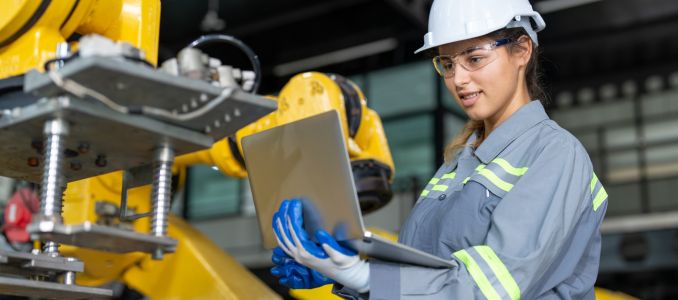The integration of artificial intelligence (AI) into workplace safety protocols is revolutionizing how small and medium-sized businesses (SMBs) can optimize their health and safety workflows. The pivotal role of predictive analytics in this evolution cannot be overstated, as it provides a robust framework for preventing injuries, enhancing compliance, and streamlining safety procedures before incidents occur. By leveraging data-driven tools, SMB leaders can transform their approach to workplace safety, making it not only more efficient but also more proactive.
At the heart of predictive analytics is the capacity to forecast risks and issues that could potentially lead to accidents. Traditional strategies typically rely on historical data, using past events as a guide to what might occur in the future. However, AI-driven predictive analytics offers a more precise and dynamic way to analyze ongoing data trends, including injury rates, equipment performance, and compliance violations. This real-time analysis enables decision-makers to understand patterns that may not be evident through conventional methods.
For SMBs looking to implement predictive analytics, the first step is to collect relevant data. Information can be gathered from various sources, including employee safety reports, equipment maintenance logs, and even external data like weather conditions. Once sufficient data is acquired, SMBs can utilize AI algorithms to identify correlations and predict future incidents. This type of data-driven insight allows management to address potential hazards proactively rather than reactively, resulting in a safer work environment.
Moreover, these predictive analytics capabilities can significantly impact various aspects of business operations. For example, consider an SMB in the manufacturing sector. By deploying AI to assess machinery health, the business can schedule maintenance when predictive algorithms signify imminent failure, thus avoiding unexpected breakdowns that can halt production. Such foresight not only enhances safety but also improves productivity and efficiency, leading to higher operational reliability.
Predictive analytics also extends to regulatory compliance, a crucial aspect of health and safety. Compliance can be a daunting and sometimes overwhelming task, particularly for SMBs lacking dedicated compliance teams. However, AI can facilitate this process by automatically aggregating and analyzing compliance-related content from multiple sources. For instance, an SMB can set up an AI solution to alert its team about the latest safety regulations and industry compliance updates. This capability ensures that the business remains informed without requiring extensive manual searches, allowing teams to focus their efforts on implementing the necessary changes, thus minimizing the risk of violations.
In addition to improving safety and compliance, predictive analytics offers a substantial return on investment (ROI) potential for SMBs. By reducing workplace injuries, companies can lower insurance premiums and fines associated with regulatory non-compliance. Furthermore, minimizing downtime due to accidents and production halts translates into cost savings that can significantly impact the bottom line. SMB leaders should consider the financial implications of investing in AI-powered predictive analytics; while the initial outlay may seem substantial, the long-term gains in safety, efficiency, and compliance can make it a worthwhile endeavor.
To illustrate, companies that have already leveraged predictive analytics report vast improvements not only in safety but also in employee morale. A workforce that feels safe and protected is more likely to be productive and engaged. Therefore, when strategizing around the implementation of AI technologies, it’s essential for SMB leaders to recognize that health and safety investments are not merely operational expenses; they are critical components of business success.
In conclusion, the integration of AI-driven workflows and automation strategies represents a transformative opportunity for SMBs seeking to optimize health and safety protocols. By embracing predictive analytics, businesses can enhance their decision-making processes and foster a culture of safety that ultimately leads to more productive and efficient operations. This proactive stance not only mitigates risks but also builds a foundation for sustained growth and compliance in an increasingly complex business landscape.
FlowMind AI Insight: The evolution of workplace safety through AI-driven predictive analytics showcases a clear path for SMBs to improve their operational efficiency and protect their most valuable asset—their employees. By investing in these innovative solutions, businesses can preemptively address safety concerns and create a more resilient workforce.
Original article: Read here
2025-06-05 07:00:00

